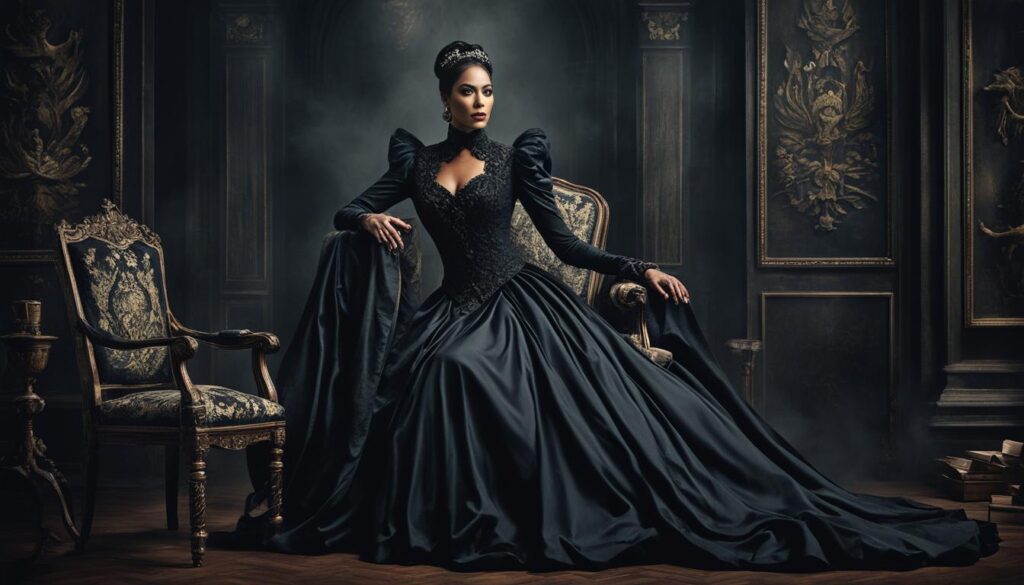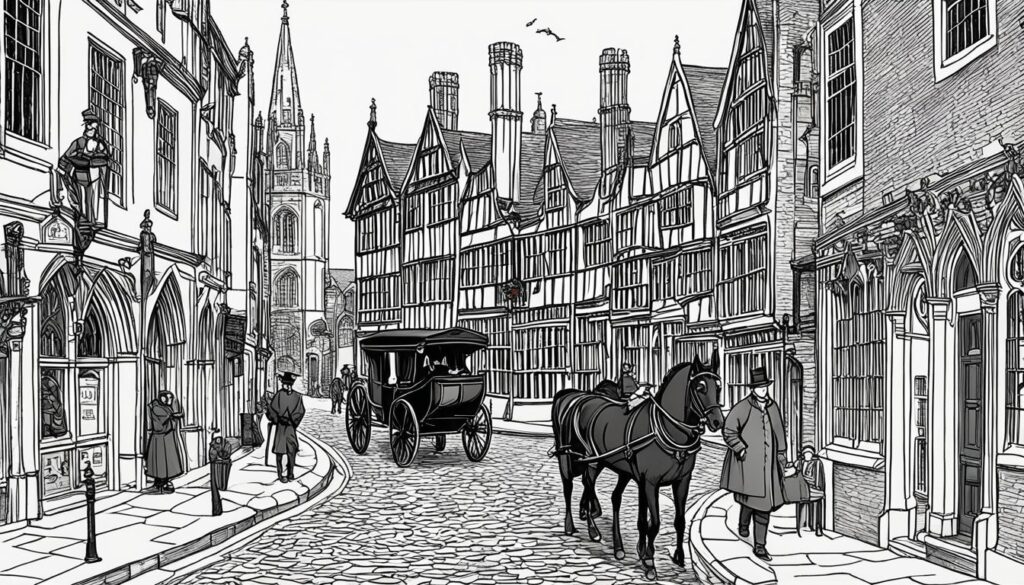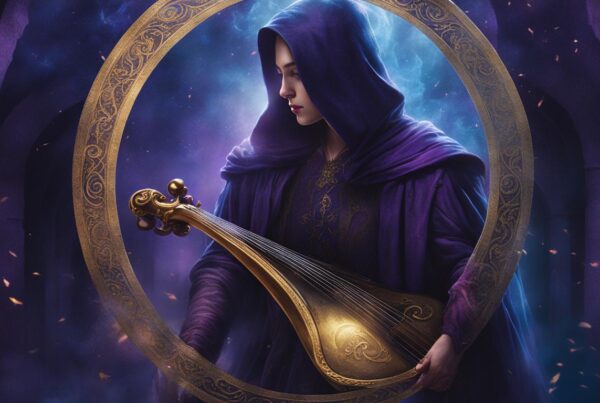Dive into the dark recesses of medieval history with Ariana Franklin’s Mistress of the Art of Death, a historical thriller that has garnered a dedicated following and critical acclaim. This riveting review will illuminate the reasons behind the novel’s success and its position as a beloved staple in the medieval mystery and crime fiction genres. Transporting readers to the 12th century, Franklin masterfully conjures a world where science and superstition collide, creating a narrative pulsing with life and rich historical detail.
Tagged as a national bestseller, Mistress of the Art of Death stands out not just for its captivating plot but also for the groundbreaking portrayal of a female protagonist in a landscape commonly dominated by male characters. The expertly woven tapestry of intrigue and authenticity encapsulates what readers and the Historical Fiction Society have come to celebrate in this standout title. Whether you are a lifelong fan of period pieces or a newcomer to the intrigue of past worlds, this novel promises to hold your attention, page after spellbinding page.
Introducing “Mistress of the Art of Death”
Welcome to the shadowy lanes of twelfth-century England, where the Medieval thriller, “Mistress of the Art of Death,” weaves a tapestry of intrigue and danger. In the heart of this captivating crime novel, resounds the name of Adelia Aguilar, an anomaly of her time—a forensic detective whose intellect and skills are central to unraveling the novel’s dark mysteries. Authored by the esteemed Ariana Franklin, this title launches the Adelia Aguilar series, plunging readers deep into the gritty reality of historic crime-solving.
The series sets up a brilliant juxtaposition of ancient worldviews and the timeless quest for truth, melding vibrant characters with multilayered plots. Let’s dissect the elements that make “Mistress of the Art of Death” a masterpiece of its genre through a concise chart comparing traditional and modern forensic detective work, as exemplified in the Ariana Franklin series:
| Medieval Forensics | Modern Forensics |
|---|---|
| Reliance on testimonies and intuition | Use of DNA analysis and databases |
| Herbal remedies for preserving remains | Chemical preservatives for autopsies |
| Examination of wounds by visual inspection | Advanced imaging techniques and microscopy |
| Understanding of death through religious lenses | Death investigations led by scientific principles |
In this era of the Crusades and sword-clashing knights, the figure of Adelia Aguilar emerges—unfolding the story of a woman who defies the constraining social fabrics of medieval life. Franklin’s narrative invites readers to a crossroads of history and fiction, where the past’s echos breathe life into a suspense-filled tale that thrills and educates. The Ariana Franklin series is not just a mere foray into the bygone epochs but a robust examination of the infancy of what we now know as forensic science.
“Adelia is a creature of reason in an unreasonable world.” – Ariana Franklin, Mistress of the Art of Death
As we delve further into the life and times of Adelia Aguilar, it becomes evident that “Mistress of the Art of Death” is more than a crime novel; it is a journey through the complexities of human nature and the relentless pursuit of justice, irrespective of time and age.
The Ingenious Plot of Ariana Franklin’s Novel
In the heart of Ariana Franklin’s gripping narrative lies a finely woven tapestry of medieval crime solving that defies the sands of time. Through the adept integration of historical accuracy and inventive thriller plot developments, Franklin resurrects the distant twelfth century with an astonishing veracity, allowing contemporary readers to traverse the cobblestoned streets alongside a pioneering female protagonist.
Unveiling the Mystery of Medieval Crime Solving
The underpinnings of the plot rest firmly on the pillars of medieval criminology, presenting a rare glimpse into the archaic methods of forensic pathology that once dominated the period’s approach to justice. Franklin’s narrative indulges in considerable detail as it explores the conundrums and techniques employed by a time far removed from modern technological advancements. The resourcefulness displayed within the novel’s pages pays homage to the era’s investigative tenacity, resurrecting a time when answers lay in the subtleties of the human condition and the observable truths found in nature.
Groundbreaking Protagonist: A Female Forensic Pathologist
Adding to the narrative’s richness is Adelia Aguilar, the protagonist whose role as a female forensic pathologist forms the backbone of this riveting thriller. Aguilar is characterized by her unwavering determination and sharp intellect, traits that set her apart in an era where women were often confined to the margins of professional fields. Franklin, through this strong female lead, dismantles the traditional gender roles imposed by the Middle Ages, offering instead a character who is both of her time and timeless in her appeal and relevance.
The deft interplay of character and plot within Franklin’s work presents a masterclass in the balancing act of fiction-writing. While the historical backdrop of the novel is painted with a broad brush of authenticity, it is the human spirit of Adelia Aguilar that provides color to these shades of antiquity, crafting a story that is as much about historical accuracy as it is about the enduring narrative of human resilience and intelligence.
Critical Acclaim and Awards
Since its release, “Mistress of the Art of Death” has garnered significant critical acclaim and a multitude of book accolades. As a bestselling historical thriller, the novel has not only captivated a wide audience but has also received recognition with prestigious literary awards. The following details showcase the impact these honors have had on the book’s status and its reception in the literary community.

Recognition in the Literary Community
The depth of research and captivating storytelling in “Mistress of the Art of Death” has won praise from historians and literary critics alike. Distinguished reviews highlight the novel’s ability to weave suspense with historically accurate details, setting it apart as a standout work in historical fiction.
“A masterful blend of history and suspense, ‘Mistress of the Art of Death’ transcends the genre and brings a new vibrancy to historical thrillers.” – Noted Book Critic
Awards and Honors Bestowed on the Novel
Below is a list of awards and honors that have been bestowed on this exceptional work of literature:
| Year | Award | Category |
|---|---|---|
| 2007 | Historical Writers’ Association Gold Award | Best Historical Novel |
| 2008 | Ellis Peters Historical Dagger | Best Historical Crime Novel |
| 2009 | International Thriller Writers Award | Best Original Paperback |
| 2010 | GoodReads Choice Awards | Best Historical Mystery |
These distinguished awards have not only solidified the book’s position within the annals of historical thrillers but also elevated Ariana Franklin’s standing as a venerated author in the field.
“Mistress of the Art of Death” in the Context of Historical Fiction
The historical fiction genre embarks on a journey through time, painting the bygone eras with a narrative brush that blends fact with imaginative storytelling. Ariana Franklin’s unique approach to this genre through “Mistress of the Art of Death” sets an intricate stage for genre analysis, particularly around medieval period novels. Through an exploration of Franklin’s novel, a better understanding of the intricacies of historical fiction emerges.
| Element | Genre Commonalities | Ariana Franklin’s Approach |
|---|---|---|
| Setting | Often glosses over gritty details | Provides an unflinching portrayal of the medieval period |
| Protagonist | Male-dominated narratives | Centers a female forensic pathologist |
| Plot Complexity | Linear storytelling | Complex intertwining of mystery and history |
| Historical Accuracy | Mixed approach to factual precision | Commitment to historical details |
As seen from the table, the novel challenges the traditional tropes found in historical fiction, opting for a more nuanced and character-driven narrative often absent in medieval period novels. Franklin’s narrative is rich in detail, revealing the unvarnished realities of a time that is frequently romanticized. Furthermore, her decision to place a female protagonist at the helm is a divergence that not only refreshes the genre but also infuses it with modern sensibilities about representation and gender roles.
“Ariana Franklin’s narratives are a testament to historical fiction’s potential to inform and entertain, while challenging readers to reconsider the past from unconventional perspectives.”
Writing historical fiction, as Franklin demonstrates, involves a delicate balance between providing educational content and offering an engaging plot. The rewards for readers are manifold; they are transported to another time, but also provided with a mirror that reflects contemporary issues reflected through past societies.
In summary, “Mistress of the Art of Death” exemplifies how historical fiction can be both a window into an authentically portrayed past and a compelling literary piece. Ariana Franklin’s novel not only stands as a piece of entertainment but also contributes to a broader genre analysis, inviting readers and writers alike to reconsider the boundaries and potentials of historical narratives.
Character Development and Storytelling Techniques
Within the realm of historical fiction, authors like Ariana Franklin rise to the challenge of breathing life into the past with vibrant characters and rich narrative landscapes. Crafting gripping tales requires a masterful blend of character development, narrative techniques, and an intimate understanding of authentic historical settings. Franklin’s works stand as a testament to the meticulous research and creative storytelling that underpin compelling historical fiction.
Creating Authentic Characters in Historical Settings
To construct believable characters that resonate with readers, Franklin employs a depth of character development that transcends the boundaries of time. She envisions individuals with complex motives, desires, and flaws, ensuring that they reflect the societal norms and cultural nuances of their period. This approach not only enlivens the narrative but also provides a lens through which modern audiences can explore and understand historical contexts.
The Art of Weaving Fiction with Historical Facts
Franklin’s narrative techniques showcase a delicate balance between fact and fiction, a tightrope walk that demands a meticulous approach to historical accuracy. Characters move through well-researched settings, their lives intertwining with recorded events and real historical figures. This interplay enriches the storytelling, allowing readers to immerse themselves in an authentic past, framed by the author’s inventive plots and engaging prose.
| Aspect of Character Development | Techniques Used | Impact on Storytelling |
|---|---|---|
| Backstory and Motivation | Comprehensive historical research, integrating real-life personas | Increases emotional investment and believability of characters |
| Dialogue and Dialect | Use of period-accurate language with an accessible modern twist | Enhances setting authenticity while maintaining reader engagement |
| Conflict and Growth | Character arcs mirroring historical challenges and transformations | Facilitates a deeper connection with the character’s personal journey |
| Cultural and Social Integration | Characters embodying the values and customs of their time | Allows exploration of historical issues through a personal lens |
The convergence of these character-building elements and narrative strategies culminates in a rich tapestry that speaks to the core of storytelling in historical fiction. As readers traverse the landscapes of Franklin’s imagination, they encounter a past that is not simply recounted but experienced—a testament to the enduring power of well-crafted historical fiction.
Exploring Themes and Setting in Ariana Franklin’s Work
The thematic exploration of Ariana Franklin’s “Mistress of the Art of Death” serves as a fascinating study into the intricate dynamics of medieval society, especially in the historical Cambridge setting. Through the novel’s narrative, the roles and powers ascribed to women are both questioned and re-envisioned, offering readers a glimpse into the potential for women’s empowerment even in the rigidly structured Middle Ages.
Gender Roles and Women’s Empowerment in the Middle Ages
In a time where conventional medieval gender roles dictated the lives and fates of women, Franklin’s protagonist emerges as a beacon of defiance and empowerment. The dedication to authenticity in character development enables the novel to assess the nuanced realities of societal constraints while simultaneously celebrating the proto-feminist qualities of its lead character, effectively bringing the theme of women’s empowerment to the forefront of its historical thriller narrative.
Franklin’s portrayal shows how the protagonist’s prowess and intellect challenge the status quo, weaving a tale of empowerment against a tapestry of historical authenticity.
The Rich Tapestry of 12th Century Cambridge
The locale of Cambridge in the 12th century is more than a backdrop; it is a living, breathing character within the story. The deep dive into this historical Cambridge setting illuminates the complex societal structures and day-to-day realities that color the protagonist’s encounters. Franklin’s meticulous location research pays dividends, as each page rings with the echoes of medieval life, from stone-laden streets to the hallowed halls of academia.

As readers traverse the novel’s historical terrain, they uncover a world bridging the gap between fact and fiction. This act of balancing remains one of Franklin’s most admirable feats—transporting her audience to a time long passed while ensuring relevance and resonance with contemporary themes of autonomy and identity.
In summary, “Mistress of the Art of Death” accomplishes a compelling thematic exploration by underscoring medieval gender roles within a well-crafted and vivid historical Cambridge setting. Thus, it champions the notion that women’s voices, even from the depths of history, can echo powerfully through the corridors of time.
Ariana Franklin: The Author Behind the Bestseller
Deep within the tapestry of historical mystery writers, the name Author Ariana Franklin shines with a particular brilliance. Known for her gripping narratives and meticulous attention to historical detail, Franklin’s work as a mystery novelist stands as a testament to her passion for the past and its stories. Drawing from a rich biographical background, Franklin’s novels, including the acclaimed “Mistress of the Art of Death” series, have captivated readers worldwide, leaving an indelible mark on the genre.
Before reigning as a queen of historical crime, Franklin, whose real name was Diana Norman, had a diverse career in journalism. Her mastery of the written word was initially honed through her work as a reporter, a skill that served her well when crafting her complex narratives. As she transitioned into the realm of fiction, her innate ability to weave fact with fiction propelled her tales to great heights.
“Every novel is a journey. I travel through time to bring the shadows of the past into the light of the present.” – Ariana Franklin
Franklin’s profound writer’s influences can be traced to the annals of both literature and real-world history. Her characters resonate with authenticity and depth, often reflecting the inner workings and social issues of the times they inhabit. Unafraid of delving into the darker corners of human nature, she exposes the raw essence of her characters through the lens of their era.
| Early Life | Journalism Career | Literary Impact |
|---|---|---|
| Born and raised in London, fostered a deep love for history | Worked as a journalist, developing keen research skills | Author of “Mistress of the Art of Death”, a blend of historical fact and fiction |
| Education steeped in classical literature | Covered various significant events, shaping her worldview | Revitalized interest in medieval settings within the crime genre |
Amidst the pantheon of her peers, Franklin’s work as an author is significant for her deft incorporation of female empowerment, a theme often overlooked in historical settings. Her portrayal of strong, intellectual women breaking the confines of their societal roles has not only provided thrilling narratives but also invoked thought-provoking commentary on historical gender dynamics.
As to the question of legacy, Ariana Franklin’s novels are more than mere escapism—they are immersive experiences that transform historical curiosities into palpable realities. Her influence on both readers and aspiring writers is a reflection of her dedication to the craft—a dedication that has immortalized her within the canon of mystery novelists.
Audiobook Review: Bringing “Mistress of the Art of Death” to Life Through Audio
The transition from the written word to the spoken voice offers an entirely new dimension to experiencing a novel. In the case of the Mistress of the Art of Death audiobook, it exemplifies how audiobook narration can transform a story, taking listeners on an immersive listening experience that is both enriching and captivating.
At the heart of any audiobook review should be an assessment of the narrator’s performance, as it is integral to the enjoyment of the audio format. With this audiobook, the listener is treated to a narrator who grasps the essence of Ariana Franklin’s characters and the atmosphere of the medieval setting. The tone, pace, and emotive narration breathe life into the storyline, making every moment spent listening to the audiobook as compelling as reading the book itself.
Listeners have reported that the Mistress of the Art of Death audiobook not only matched but, in some instances, surpassed their expectations, providing an extra layer of engagement that couldn’t be achieved on paper.
Furthermore, the strength of the audiobook lies not just in a single element, but in the confluence of production quality, voice acting, and the story’s natural fit for the audio medium. When we talk about an audiobook review, it is essential to highlight how the production team has paid special attention to the finer details that contribute to the overall experience – the pacing, the clarity, and the subtle yet effective use of sound to enhance dramatic moments.
- Vivid Characterization
- Evocative Setting Development
- Engaging Plot Progression
In conclusion, the Mistress of the Art of Death audiobook stands as a testament to how a well-crafted narration can enhance the text it is based on. It’s an example of how stories can be experienced in multiple ways, each format offering a unique take that can sometimes offer new insights or heightened enjoyment – and this audiobook is a sterling example of that.
Conclusion
In retrospection, the voyage through “Mistress of the Art of Death” by Ariana Franklin has been both captivating and enlightening, establishing her work firmly within the pantheon of the historical thriller genre. Our book review summary has endeavored to encapsulate the essence of Franklin’s masterful creation, dissecting the intriguing plot that weaves together forensic science and medieval society, and probing into the depth of the novel’s remarkable protagonist, Adelia Aguilar. Franklin’s narrative technique demonstrates a seamless integration of accurate historical detail with rich storytelling, leaving an indelible Mistress of the Art of Death impact on its readers.
The thematic breadth of the novel resonates well beyond the final page, as it confronts the reader with stark representations of gender norms, power structures, and social mores in a context that feels surprisingly modern. The final thoughts that readers are left with are not just conclusions to a puzzle, but reflections on history, humanity, and the enduring spirit of inquiry. Feedback across various forums echoes this sentiment, with reader reactions and discussions amplifying the novel’s significance and cementing its status as a beloved piece within the annals of historical thriller conclusion.
As this review draws to a close, it stands clear that Ariana Franklin has not only crafted a novel that is rich in narrative and character, but also one that has made substantial contributions to the literary world. The lasting legacy of “Mistress of the Art of Death” can be measured by its vivid portrayal of the past and relentless attention to the human condition, ensuring its place as a distinguished touchstone for future works in the realm of historical fiction and beyond.



